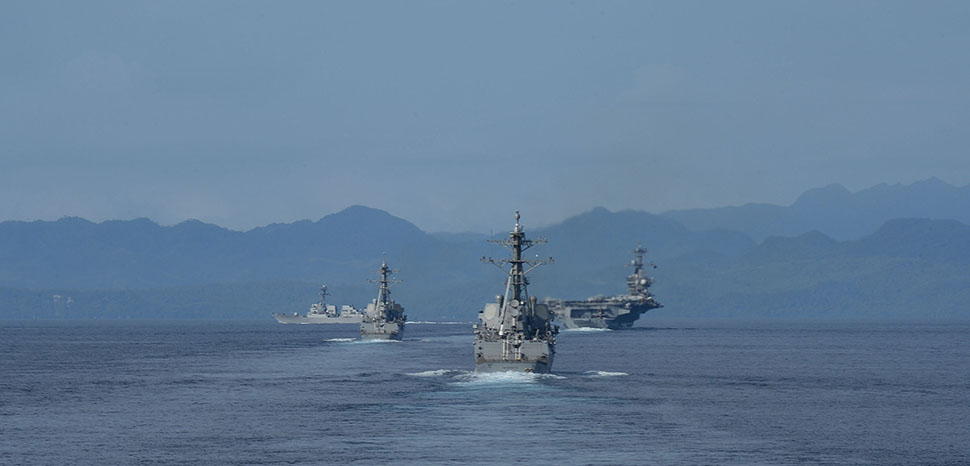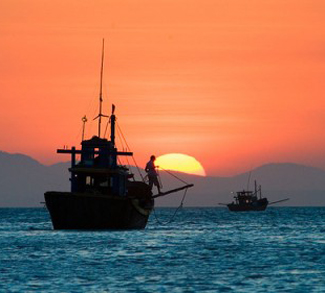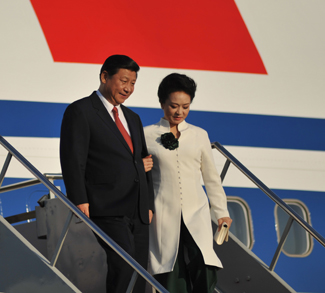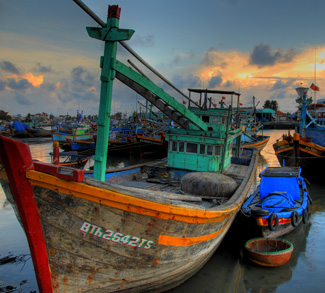Philippines-China relations are souring with every passing month, and the October 22 collision is another incident to attest to that.
The collision, which saw two Chinese vessels ramming a Philippine coast guard ship near the Second Thomas Shoal, can either be viewed as proof that the Philippines urgently needs diplomacy with China or, perhaps, to begin employing “diplomacy by other means.” Philippine Defense Secretary Gilberto Teodoro Jr. has lost all hope in the former option, saying that Beijing’s diplomatic outreach to Manila is “all for a show”; instead, he favors consulting with allies and partners to conduct multilateral joint patrols in the West Philippine Sea with the hope of altering Chinese behavior.
Ferdinand Marcos Jr. has finally adopted a clear-cut national security policy, in which he considers external defense a top-tier priority. From what follows, his government is on a tightrope on whether to exercise restraint or use big sticks amid China’s dangerous maneuvers at sea. The Philippine Coast Guard has been documenting these moves, which may reflect growing impatience in Beijing to tighten loose ends along its controversial 10-Dash Line.
Manila is weighing potential escalatory effects to diminish Beijing’s aggressive naval actions and disingenuous narrative following the latest collision during a resupply mission to the grounded Sierra Madre at the Second Thomas Shoal.
Such is the policy crossroads that forms the context for the Philippines’ consideration of joint patrols as its diplomatic ‘rod.’
We make the case that a joint patrol in the South China Sea can recalibrate the asymmetry of military squabble in the tense maritime region and ultimately deter China collectively over time. Indeed, China’s continuous escalatory moves are only doing the Philippines a favor in taking that road. Thus, it is apt for Manila to consider using flexibility; after all, conducting joint patrols is a better option for overcoming Chinese gray zone tactics than a hurried activation of the US-Philippines Mutual Defense Treaty.
Deterrence may not work in all situations but there are ways that it can succeed. While Southeast Asian states have been criticized for their lack of substantial action, collective deterrence transcends rituals or symbols of maritime cooperation to actual military operations. The opportunity knocks when willing states recognize freedom of navigation patrols as a norm-building activity to develop performative strategic practice and create effective responses to international maritime violations.
Indeed, Manila has a gamut of reasons to continue its diplomatic protests. However, to ease its possible fatigue and avoid diminishing valuable returns, combining it with joint patrols, when applied astutely, can neutralize and even the playing field against China’s adversarial malevolent attacks.
However fancy a strategy sounds, logistics is a “critical arbiter” of strategic opportunity—one cannot fight when one cannot move and supply. Moreover, serious logistics allow forces to sustain the tempo of joint patrols in a given operational theater. Hence, Filipino defense planners and policymakers must assume that joint patrols are not a one-time big-time approach with their counterparts. As James Dunnigan argued long ago, naval logistics must be mobile, with possibly dozens of tankers and dry cargo ships chasing after or accompanying the task forces that are nevertheless targets at sea themselves.
So far, the challenge is to overcome Chinese swarming over the West Philippine Sea with its combined navy, coast guard, and maritime militia vessels cleverly prepositioned around the South China Sea. With collective deterrence through joint patrol in place, China may likely resort to diplomatic slurs rather than actual collision. However, it rests upon the political will to sustain these interoperable efforts for a desired effect.




